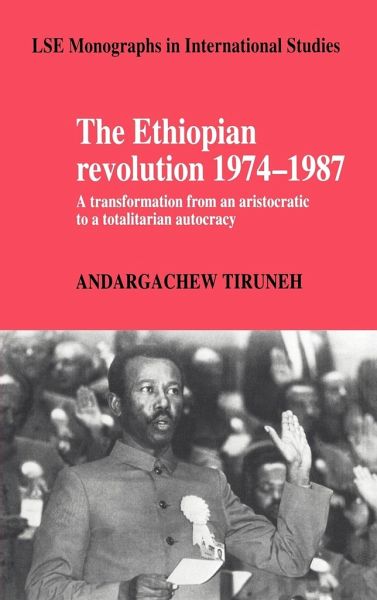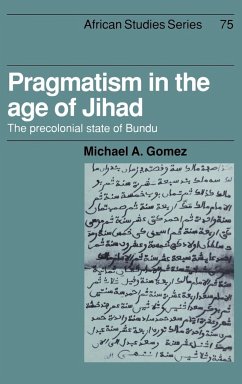
The Ethiopian Revolution 1974 1987
A Transformation from an Aristocratic to a Totalitarian Autocracy

PAYBACK Punkte
80 °P sammeln!
This book is the most comprehensive account of the Ethiopian revolution currently available, dealing with the entire span of the revolutionary government's life. Particular emphasis is placed on effectively isolating and articulating the causes and outcomes of the revolution. The author traces the revolution's roots in the weaknesses of the autocratic regime of Haile Selassie, examines the formative years of the revolution in the mid-seventies, when the ideology of scientific socialism was espoused by the ruling military council, and finally charts the consolidation of Mengistu Haile Miriam's ...
This book is the most comprehensive account of the Ethiopian revolution currently available, dealing with the entire span of the revolutionary government's life. Particular emphasis is placed on effectively isolating and articulating the causes and outcomes of the revolution. The author traces the revolution's roots in the weaknesses of the autocratic regime of Haile Selassie, examines the formative years of the revolution in the mid-seventies, when the ideology of scientific socialism was espoused by the ruling military council, and finally charts the consolidation of Mengistu Haile Miriam's power from 1977 to the adoption of a new constitution in 1987. In examining these events, Dr Tiruneh makes extensive use of primary sources written in the national official language. He is also the first Ethiopian nation to write a book on this subject. This book is thus a unique account of a fascinating period, capturing the mood of the revolution as never before, yet firmly grounded in scholarship.
Table of contents:
1. The background to the emergence of the structural crisis; Part I. The Collapse of the Old State (January-December 1974): 2. The urban uprising of January to June 1974; 3. The turning of an urban movement into a junta dictatorship; Part II. The Formative Years of the Post Revolutionary Order (December 1974-February): 4. The socio-economic reforms of 1975; 5. The upsurge of political organisations; 6. Scientific socialism and the structure of government; 7. From a junta to an autocratic dictatorship; Part III. Consolidation of Power (February 1977-September 1987): 8. The elimination of internal and external threats to Mengistu's power; 9. The formation of the Workers Party of Ethiopia; 10. The 1987 constitution of PDRE: the formalization of the party/state; 11. Conclusion.
The most comprehensive account of the Ethiopian revolution currently available, from its origins to 1987. Dr Tiruneh makes extensive use of primary sources written in the national official language, and is the first Ethiopian national to write on this subject.
The most comprehensive account of the Ethiopian revolution currently available, from its origins to 1987.
Table of contents:
1. The background to the emergence of the structural crisis; Part I. The Collapse of the Old State (January-December 1974): 2. The urban uprising of January to June 1974; 3. The turning of an urban movement into a junta dictatorship; Part II. The Formative Years of the Post Revolutionary Order (December 1974-February): 4. The socio-economic reforms of 1975; 5. The upsurge of political organisations; 6. Scientific socialism and the structure of government; 7. From a junta to an autocratic dictatorship; Part III. Consolidation of Power (February 1977-September 1987): 8. The elimination of internal and external threats to Mengistu's power; 9. The formation of the Workers Party of Ethiopia; 10. The 1987 constitution of PDRE: the formalization of the party/state; 11. Conclusion.
The most comprehensive account of the Ethiopian revolution currently available, from its origins to 1987. Dr Tiruneh makes extensive use of primary sources written in the national official language, and is the first Ethiopian national to write on this subject.
The most comprehensive account of the Ethiopian revolution currently available, from its origins to 1987.














